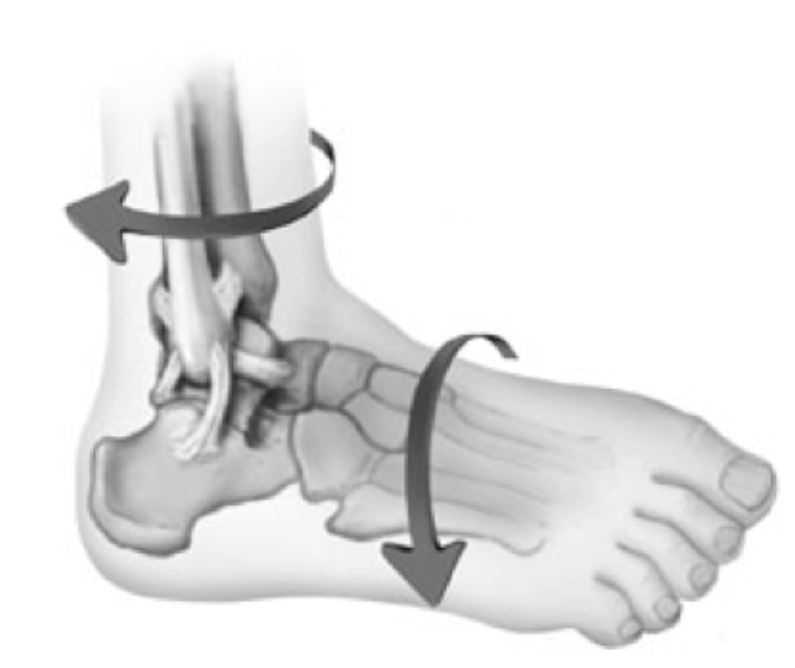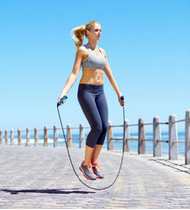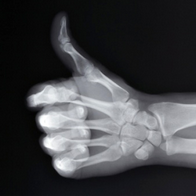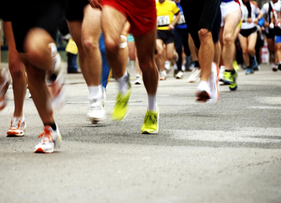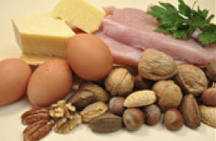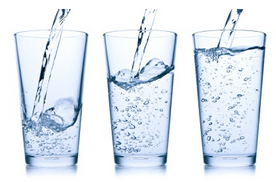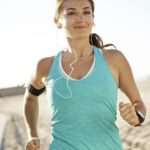Weekly News & Insights
Rheumatoid Arthritis
on November 24, 2015Rheumatoid arthritis affects everyone differently. For some, joint symptoms develop gradually over several years. In others, it may come on quickly.Some people may have rheumatoid arthritis for a short time and then go into remission, which means they don’t have symptoms.
Who Gets Rheumatoid Arthritis?
Anyone can get RA. It affects about 1% of Americans.The disease is two to three times more common in women than in men, but men tend to have more severe symptoms.It usually starts in middle age. But young children and the elderly also can get it.
What Causes It?
Doctors don’t know the exact cause. Something seems to trigger the immune system to attack the joints and sometimes other organs. Some experts think that a virus or bacteria may change the immune system, causing it to attack the joints. Other theories suggest that in some people, smoking may lead to rheumatoid arthritis.Certain genetic patterns may make some people more likely to get RA than others.
How Does It Affect the Body?
Immune system cells move from the blood into the joints and joint-lining tissue, called synovium. Once they arrive, those immune system cells create inflammation that leads to irritation, which wears down cartilage (the cushioning material at the end of bones). As the cartilage wears down, the space between the bones narrows. As it gets worse, the bones could rub against each other.Inflammation of the joint lining causes swelling and makes fluid build up within the joint. As the lining expands, it can damage the bone.All of these things cause the joint to become very painful, swollen, and warm to the touch.
Osteoporosis Prevention
on November 17, 2015- Aging
- Physical inactivity
- Reduced levels of estrogen
- Heredity
- Excessive cortisone or thyroid hormone
- Smoking
- Excessive alcohol intake
The loss of bone tends to occur most in the spine, lower forearm above the wrist, and upper femur or thigh-the site of hip fractures. Spine fractures, wrist fractures, and hip fractures are common injuries in older persons.
A gradual loss of bone mass, generally beginning about age 35, is a fact of life for everyone. After growth is complete, women ultimately lose 30% to 50% of their bone density, and men lose 20% to 30%.
Women lose bone calcium at an accelerated pace once they go through menopause. Menstrual periods cease because a woman's body produces less estrogen hormone, which is important for the maintenance of bone mass or bone strength. Your family doctor or gynecologist may evaluate and recommend a treatment program of estrogen replacement therapy, calcitonin or other medications. To be most effective, the treatment program should begin at menopause.
Age & Bone Health Fitness
on November 10, 2015A number of studies have linked the Mediterranean diet (high in fish oils, nuts, and grains and including maybe a little red wine) with advantageous effects on neurologic and mental health.
Dr. Deans, assistant clinical professor of Psychiatry at Columbia University College of Physicians & Surgeons in New York City cited recent work reporting that adults who followed the Mediterranean dietary pattern the closest over 4.4 years had a significantly reduced risk of developing depression (40%-60%).
Also, a 2014 meta-analysis by Felice Jacka, PhD, of Deakin University in Melbourne, Australia, and colleagues found that 47% of the randomized controlled trials included reported improved depression outcomes with dietary interventions, levels comparable to those of drug trials. These data are doubly promising given that dietary interventions are relatively low-risk.
Source: Bret S. Stetka, MD, July 07, 2015 http://www.medscape.com/viewarticle/847304
Exercises For Stronger Bones
on October 26, 2015There are many different types of exercises and all of them offer health benefits.
Weightbearing Exercise
Weight-bearing describes any activity you do on your feet that works your bones and muscles against gravity. When your feet and legs carry your body weight, more stress is placed on your bones, making your bones work harder.
Examples of weight-bearing exercise include:
- Brisk walking and hiking
- Jogging/running
- Dancing
- Jumping rope
- Tennis
- Team sports, such as basketball and soccer
- Stair climbing
Higher impact activities, such as jogging and jumping rope, increase the weight on bones and provide more bone-strengthening benefits. However, people who are frail or who have already been diagnosed with thinning bone should talk to their doctors about the types of physical activity that would be best for them.
Source: http://orthoinfo.aaos.org/topic.cfm?topic=A00674
read moreKey Nutrients In Bone Health
on October 19, 2015Many other nutrients — most found naturally and at sufficient levels in a typical diet — contribute to bone health and growth. They include:
- Phosphorus. A major mineral in the body's bone crystal, phosphorus is found in dairy products and meat. Vitamin D improves phosphorus absorption in the intestine and kidney.
- Magnesium. Primarily found in bone crystals, magnesium improves bone strength. Older adults are more likely to be deficient in magnesium. Calcium supplements that contain magnesium can help.
- Vitamin K. Necessary for bone formation and mineralization, Vitamin K also is important for blood clotting, and may assist in channeling calcium directly to the bone rather than the blood vessels.
- Vitamin C. Collagen is the main protein in bone, and Vitamin C is necessary for collagen synthesis. Vitamin C is present in citrus fruits and tomatoes and in many vegetables.
- Vitamin A. Vitamin A is necessary for cells to differentiate normally and for normal skeletal growth, and also is extremely important for eye health. Vitamin A is available in liver, eggs, butter, green leafy vegetables and carrots. Too little vitamin A is a major cause of blindness worldwide. In contrast, too much vitamin A can cause bone loss and increase the risk of hip fracture. The animal source supplements (retinols) may cause toxicity but plant sources (B carotene) do not. Daily intake of retinols should be less than 10,000 IU.
Source: http://orthoinfo.aaos.org/topic.cfm?topic=A00317
read moreCalcium Facts
on October 13, 2015Good Morning, ~Contact.FirstName~!
Calcium needs vary with age. The Food and Nutrition Board (FNB) of the Institute of Medicine of the National Academies provides guidelines on the amount of calcium needed each day.
Recommended Daily Allowance in Milligrams (mg)
| Life Stage Group | Recommended Daily Calcium Intake |
| Women and men 9 to 18 years | 1,300 mg |
| Women and men 19 to 50 years | 1,000 mg |
| Women 51 to 70 years | 1,200 mg |
| Men 51 to 70 years | 1,000 mg |
| Women and men > 70 years | 1,200 mg |
| Pregnant or nursing women 14 to 18 years | 1,300 mg |
| Pregnant or nursing women 19 to 50 years | 1,000 mg |
Reprinted and adapted with permission from Tables S-1 and S-2, Dietary Reference Intakes for Calcium and Vitamin D, 2011 by the National Academy of Sciences, Courtesy of the National Academies Press, Washington, D.C.
Nutrition Before Competition
on October 6, 2015What you eat several days before an endurance activity affects performance. The food you eat on the morning of a sports competition can ward off hunger, keep blood sugar levels adequate, and aid hydration. Try to avoid eating high-protein or high-fat foods on the day of an event since this can put stress on your kidneys and take a long time to digest.
To perform at your highest level, follow these general nutrition guidelines before an event:
- Eat a meal high in carbohydrates.
- Eat solid foods 3 to 4 hours before an event. Drink liquids 2 to 3 hours before an event.
- Choose easily digestible foods, rather than fried or high-fat foods.
- Avoid sugary foods and drinks within one hour of the event.
- Drink enough fluids to ensure hydration. A good guideline to follow is: Drink 20 oz. of water 1 to 2 hours before exercise and an additional 10 to 15 oz. within 15 to 30 minutes of the event. Replenishing fluids lost to sweat is the primary concern during an athletic event. Drink 3 to 6 ounces of water or diluted sports drink every 10 to 20 minutes throughout competition.
Source: http://orthoinfo.aaos.org/topic.cfm?topic=a00370
read moreFacts About Protein
on September 29, 2015Proteins give your body the power to build new tissues and fluids among other functions. Your body cannot store extra protein so it burns it for energy or converts it to fat. The amount of protein you need depends, in part, on your:
Good sources of protein include meat, cheese, eggs, and nuts
© Thinkstock, 2014
- Level of fitness. Physically active people need more protein than those who do not exercise. You also need more protein when you start an exercise program.
- Exercise type, intensity, and duration. Endurance athletes often burn protein for fuel, as do bodybuilders and other athletes who perform intense strength-building activities.
- Total daily calories. Your body burns more protein if you do not consume enough calories to maintain your body weight. This can happen if you eat too little or exercise too much.
- Carbohydrate intake. Your body may use protein for energy if you exercise with low levels of muscle glycogen or if you do repeated training sessions without eating more carbohydrates. When you start with enough muscle glycogen, protein supplies about 5% of your energy; otherwise, it may supply up to 10%.
Source: http://orthoinfo.aaos.org/topic.cfm?topic=a00370
read moreHydration Quick Facts
on September 22, 2015The following tips will help you stay hydrated:
- Drink small amounts of water frequently rather than large amounts less often.
- Drink cool beverages to lower your core body temperature and reduce sweating.
- Track your sweat loss by weighing yourself both before and after exercise. For every pound lost through sweat, drink 16 to 24 oz. of water. Your body weight should be back to normal before your next workout.
- Pay attention to the amount and color of your urine. A large volume of clear urine is a sign that you are well-hydrated. Smaller amounts or dark yellow urine can indicate dehydration.
Source: http://orthoinfo.aaos.org/topic.cfm?topic=a00370
read more
